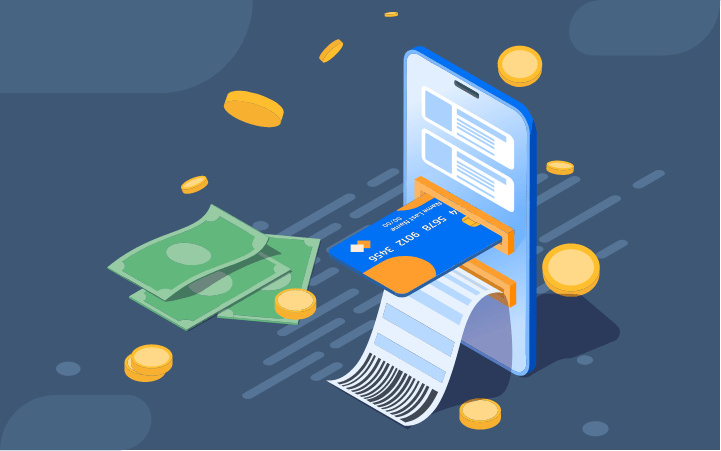
Online payments have been increasing continuously since Covid 19. The excessive use of smartphones and the internet are also some contributing factors. People feel more convenient making online payment as they can relax on their couches and shop for anything from around the world.
According to a study by Grand View Research, the digital payments market was around USD 68.1 billion in 2021 and is estimated to expand at a CAGR of 20.5% during 2022-2030. In addition, with the increase in online payments, cyber-attacks in payment transitions have also increased.
Research by Pay Safe suggests that 62% of global consumers are so concerned about fraud risks in online payments that they think fraud is an inevitable risk of online shopping. This stat indicates there’s a considerable amount of fear about online payment security.
So, it is vital to take action against the security risks involved in the payment process. However, various payment service providers have started taking necessary steps to improve security in online payment processing by following the best practices on security and adding extra security layers to their payment systems.
Reading this blog, you will get an idea of the best practices you should follow for the secure processing of your online payment solutions and the essential factors for secure online payment.
3 Factors to Consider for Secure Online Payments
Before we discuss the best practices, you must first know and understand the three factors for secure online payments.
Fraud Management
One of the major concerns is to secure your online payment system from the risk of fraud. And higher rates of fraud can even cause a decrease in the use of your payment systems among your customers and can also affect your goodwill in the long run.
So, fraud management is essential for your business’s long-term stability and success.
Advanced Security Measures
Cyber hackers are always looking to find vulnerabilities in your payment system to dive in and steal sensitive data or money while your payment is in processing.
To avoid this, you should always be prepared to take advanced security measures and protect your business & consumers from security breaches.
Compliance Adherence
As we now know, payment systems come with risks of fraud and security. But, to reduce these risks, some standards and regulations are formed by government and payment regulation bodies.
If these standards and regulations are complied with, it will be beneficial for your business’s privacy and security. So to consider these three factors, you must implement the best practices for secure online payment processing.
15 best practices for secure online payment processing
Implementation of Tokenization in Payments
Tokenization is the method of converting sensitive information into tokens. These tokens are alphanumeric values in no particular order. During the online payment process, tokenization converts sensitive user data into tokens.
This sensitive information can be a cardholder’s bank details, card details, and personal information.
These tokens can be used for a single payment only. After that, it becomes redundant. The best part is that no party in the entire process can decode these tokens. Thus, the entire process remains safe and secure.
Biometric Security Systems
A Biometric system is a POS technology that authenticates online payments through biometric scans like fingerprint scans, face recognition, or retina scans. But the most used biometric security authentication method is the finger scan.
Here, the user authentication is done through a finger scan. Then the user can process further to complete a payment transaction using a Personal ID Number (PIN). Thus, there is an extra layer of security with biometric authentication.
Use 3D Secure
3D secure is a security protocol that adds an extra security layer, in card-not-present transactions. This protocol is known as 3DS because it involves three parties: the issuer, the retailer, and the company that provides this protocol to both former parties.
This protocol adds protection layers with two-step authentication on each payment transaction to authenticate the users beforehand through a PIN or an OTP. Recently, a 3D secure protocol has been updated to 3D secure-2 to comply with the latest security standards.
Strong Customer Authentication (SCA)
Strong Customer Authentication (SCA) is the technical standard for the authentication of payments used for fraud reduction and secured online payments.
There are three elements in SCA. Something they are (fingerprint or face scan), something they know (A password, PIN, or security question), and something they have (a mobile phone or hardware device). This standard requires two out of these three elements to authenticate and begin the payment process.
Encrypting Data With Security Protocols
Data encryption is necessary to practice for a secure payment process, as it is data that is under security threat. The payment data can be secure through security certificates or protocols: SSL and TSL.
SSL or Secure Sockets Layer is a digital certificate that authenticates and secures sensitive data and provides an encrypted website connection. TSL or Transport Layer Security is a protocol designed to protect privacy and secure data during online payment communication.
Keeping a Close Eye on Frauds
There are so many risks associated with payment and data security. So it is necessary to keep a close eye on fraudulent activities. To do so, you must continuously monitor the admin panel of the electronic payment system.
If there’s any unusual transaction or any other suspicious activity that can be an attempted fraud, you can report and block it. Also, you can implement some extra layer of security systems so that such activities do not repeat.
Keeping PCI Standards in Check
The Payment Card Industry or PCI standards are the most regarded security standards for online payment processing. The main goal of these standards is fraud reduction and improved security in online card payments.
If any merchant providing payment services does not comply with the PCI standards, they are liable to pay fines and face security risks. So, to avoid any security breaches during the payment process, the PCI standards should have been adhered to without fail.
Integration of Security APIs
Security APIs can help in keeping online payment processes highly secure. When you integrate an API into your website or application, the security API will automatically transmit your data into its system and begin operating as a protection layer for each payment sent or received.
Address Verification Service (AVS)
Address Verification Service or AVS is a verification service provided by credit card processors to merchants. With AVS, merchants can verify card ownership when a customer makes an online payment. Hence it can help find potential fraud attempts and secure your digital payment solutions from security breaches.
AVS is the most commonly used security service. And this security service is used by almost every merchant as it is easily implementable.
Protect Tampering of Physical Hardware
Cyber attackers or hackers keep trying to breach the physical hardware from which online payments are processed such as POS and NFC payment systems. Scammers can trick you into swiping the data of your physical hardware.
The business must schedule regular supervision and necessary maintenance to avoid these hackers and scammers. Also, you can keep CCTV cameras in the areas where tampering is possible and can keep the emergency system with complete security in a no-access zone.
Keep Updating the Operating Systems
The operating systems (OS) are important in payments. And when the operating system becomes outdated, it gets prone to security risks and can be easily targeted by hackers to steal money and data.
And keeping the OS fully updated from time to time also eliminates the previous OS’s security risks. Hence, we must keep our operating system up-to-date.
Verify payments with one-time passwords
One-time passwords are widely used today for instant verifications of payments. When the user proceeds further in the payment process, they need to enter a one-time password (OTP) sent on SMS or Email. The OTP could be a Four or six-digit number that expires in a few minutes.
The sole purpose of OTP is to ensure payment security and authenticate the payment before it is deducted from a user’s credit/debit card. Once the user enters the OTP, the payment is verified, and the purchase is successful.
Implement Anti-Fraud Tools
Fraudulent activities in the online payment process are harmful yet quite common today. There are many credit card frauds like stolen cards, misuse of personal information, and unauthorized payments which can adversely affect the payment environment.
These frauds may result in loss of finances, high chargeback fees, and suspension of bank accounts. To avoid this situation there must be anti-fraud tools in the business.
These tools can analyze the transactions, keep tracking the account actions, and determine any new or upcoming security risks and solve them instantly.
Employee Training For Gauging Payment Fraud
The employees are the true assets of any business. So, businesses must train their employees to stay completely aware of the importance of a secure online payment process. This way, they will never miss detecting a suspicious or fraudulent transaction happening in front of them.
Hence, businesses will be able to reduce the maximum chances of fraud and will be able to focus more on providing their best services to their customers.
Penetration Testing
Penetration testing is a process wherein the business creates an internal team to find all the vulnerable loops in the entire payment process. These teams act as hackers and try to attack their payment systems in every way possible.
They do this testing on different devices like mobile phones, tablets, ipads, computers, and laptops.
This way, the business can find weak areas in the payment process and fill the gaps with necessary solutions. These solutions can be any 14 practices mentioned above or any other practice that will best work for their business.
Conclusion
Undoubtedly, secure online payment processing is an essential part of an online payment system. It is a trust factor for both businesses as well as their customers. However, there are always going to be fraud and security risks in online payments and transactions. So, it’s necessary to mitigate or eliminate these risks.
As a result, these best practices for secure online payment processing can be the guiding principles for your business. And by following them, you can keep the customer’s trust & business reputation intact and eventually be profitable and successful.






